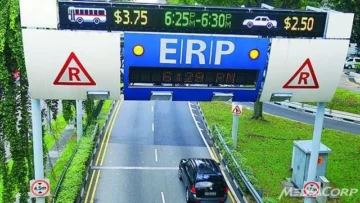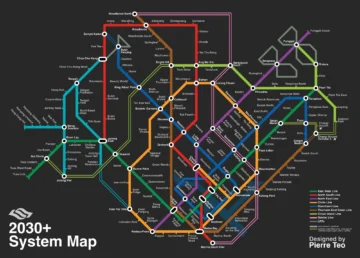by Eric Feigenbaum
 Professor Paul Heyne practiced what he preached.
Professor Paul Heyne practiced what he preached.
I had the good fortune of having Professor Heyne’s Microeconomics class in my very first quarter at the University of Washington. He may have been tenured faculty whose own textbook we used, but he was a natural instructor who engaged students effortlessly. Which is no small feat when speaking to 400 mostly freshmen students in the university’s largest lecture hall.
Professor Heyne understood the “sage on the stage” model of education came with challenges at best. Still, that’s what the university demanded, and it was his job to make it work. So, he followed his own beliefs and teachings and offered students incentives for valuable participation – in the form of muffins and cookies.

Before every class, Professor Heyne picked up a dozen baked items from the café in the next building. He had Teaching Assistants running around the lecture hall with wireless microphones, getting them to students with raised hands. When someone offered a correct answer or insightful comment, they might hear, “Give that woman [or man] a cookie!” And he or she was rewarded like a dog getting a Milk Bone.
Everyone knew there was a limited supply of treats – so they were not only coveted, but reserved for high quality participation. Moreover, in true Pavlovian fashion, the opportunity to get a treat had most of what could easily have been a large, passive audience perked up and participating at 9:30 am.
Professor Heyne had an amazing way of teaching Microeconomics in a narrative, easy to understand way. He most consistently pointed out we are all making economic decisions every day, all the time – because economics isn’t about money, it’s about trade-offs, resources and maximizing our utility which could just as easily be sunshine and water as dollars and labor. Unsurprisingly, his book was called The Economic Way of Thinking.
One of Professor Heyne’s favorite topics was using economic incentives to create policy – both public and private. Professor Heyne argued Seattle’s SR-520 bridge needed a toll and increased bus coverage. The toll would incentivize carpooling and public transportation usage thereby reducing traffic and having the side benefit of increased tax revenues that could be invested into better transportation infrastructure. Two decades later, well after Professor Heyne lost his ongoing battle with cancer, politicians finally agreed with him and the 520 Bridge became tolled.
I’m sure Professor Heyne and Singapore’s early leaders would have gotten along famously. While Professor Hayne earned his degrees in economics at Washington University and the University Chicago and several of Singapore’s leaders including founding Prime Minister Lee Kuan Yew studied at The London School of Economics – they clearly shared an economic way of thinking.
Singapore makes extensive use of economic levers to create social policy. For example, much like Professor Heyne and the 520 Bridge, Singapore sought to reduce pollution and traffic by limiting vehicles on its roads. Cities around the world address these issues by building good public transportation – which beginning in the 1970s, Singapore did as well. It has an amazing network of efficient, clean and highly affordable metro-rail trains and buses.
Only giving people an affordable alternative to private vehicle transport alone often doesn’t get the results that truly open up roads and bring down smog levels. Singapore used economic incentives and deterrents to stack the deck: nearly 100 percent tariffs on new motor vehicles, a ten-year-maximum in how long a vehicle can operate on Singaporean roads, a dynamically surging toll zone around the city center, highly taxed gasoline, vehicle registration costs of roughly $37,000 USD and a cap of roughly 600,000 license plates for the entire city-state of roughly 5.6 million people. That means aspiring vehicle owners may face a wait-list just to be able to register a vehicle for $37,000.
Alternatively, anyone could take the ultra-clean, modern trains with Wi-Fi and subterranean cell service for as little as 90 cents USD. Or one of Singapore’s approximately 82,000 licensed taxis and ride shares for a few dollars. Big shopping trip? No problem – go to the mall via MRT and haul everything home by taxi for a total cost of maybe $7.50 USD. It’s a lot cheaper than $50,000 USD for a new car and $37,000 to register it.
Of course, the choice remains yours. If you have the resources and really want it, you CAN have a car. You just have to value it highly. Singapore doesn’t take away its citizens options – it just forces their hands.
I have to imagine Professor Heyne would be suitably impressed.
Similar mechanisms and policies exist with respect to smoking, drinking, prostitution, healthcare, home buying, and even family planning for which Singapore’s Baby Bonus Cash Gift program issues roughly $10,000 USD to Singaporeans bearing a third child and an additional $3785 in a Child Development Account for use later toward other care expenses.
While Singapore wants the birth rate increasing, it also doesn’t want women exiting the workplace. Accordingly, under the Working Mother’s Child Relief program gives USD $6.000 annual relief for her first child, $7,500 for her second child, and $9,000 each for her third and subsequent children.
Naturally there are single, unmarried, childless, apartment-renting, car-driving drinkers and smokers. They not only pay a lot for their status including excessive taxes – but forgo substantial government funds and tax credits. It is their right to make their choices.
Singapore is addressing most of the same issues as other developed nations – most of them Western: falling birth rates, transportation infrastructure, air quality, climate change, greenhouse gas emissions, healthcare accessibility and housing costs. In fact, it fundamentally agrees with its Western counterparts on goals and social policy prescriptions – taxing cigarettes heavily, regulating where they can be smoked and targeting smoking as a public health problem, for example.
However, as evidenced in its aforementioned set of economic incentives and deterrents on private vehicle ownership, Singapore at times is willing to go much further. Interestingly, other than perhaps limiting the total number of license plates available, most of Singapore’s methods to address traffic, emissions and fuel dependency are shared by numerous other developed nations – just not in such a comprehensive combination. Singapore takes the bold step of targeting a shift in both the supply AND demand curves around driving.
Critics often label Singapore as Paternalistic – which by definition may be true. But such is the case with almost any social policy legislation in any country. The question is whether to view Singapore’s methods as heavy-handed, or effective. I can only say that when I drive swiftly over Seattle’s 520 bridge or when I sit in gridlock on Los Angeles’ 405 Freeway – it’s hard not to think Singapore makes a good point.
Enjoying the content on 3QD? Help keep us going by donating now.
